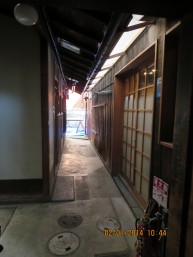After weeks of emailing various places, trying different things, and sorting out a few problems, I finally ended up at the Kamogama Ceramics Studio with a wheel to myself and all the tools, clays, and glazes I would need to keep me going for the next few months. Honestly speaking I was unprepared for the amount of freedoms they offered me considering the other studios I had emailed or visited did the exact opposite of that in the form of time, materials, or cost limitations. But since this place was offering everything, I figured it would be a waste to let this opportunity go by, and I jumped on the offer. Only five people worked at this ceramics studio-store-coffee shop hybrid, so I wasn’t expecting too much contact with people my age let alone people at all given that most of the staff worked the cafe. Fortunately the woman who worked the ceramics side of the business made it her informal job to be my ceramics instructor and go to person for questions regarding Japan. Through this relationship, I came to understand a lot about what Japanese people see in foreigners.
Communicating with my instructor was easy. I spoke enough Japanese to describe the things I wanted to do with my pieces, and in exchange, my instructor would teach me what the Japanese term for said action was. However, whenever the topic strayed away from ceramics, my instructor would immediately assume that I practically didn’t know anything about Japan. At times I appreciated this because of the depth of the explanations she would give me, but also I started to wonder what she actually thought of me. I would start a conversation about Christmas traditions in Japan, for example, and without fail, as she does every week, she would compliment my Japanese skills and then continue on about Christmas. My limited conversations with the other staff reinforced the idea that they were actually fixated on the fact that I was speaking Japanese to them even after weeks of coming to the studio.
Although not ideal, I prefer this over being spoken to as if I were a Japanese person. I actually sometimes play the foreigner card to ask really silly questions like “Why is a lot of anime about school?” or “Why do the pottery wheels spin the other way here?”. I feel like this small studio is more like a second homestay rather than a CIP project space although the people here never seem to get that my Japanese skills have gotten me through everyday life for the past few months. Just the other day one of the staff members complimented me on my ability to write in both hiragana and katakana even though my emails go far beyond that. Still, it’s been fun in its own way, and I’m going to miss everyone that helped me along the way. I’ll be sure to remember them through the pieces they helped me make.

